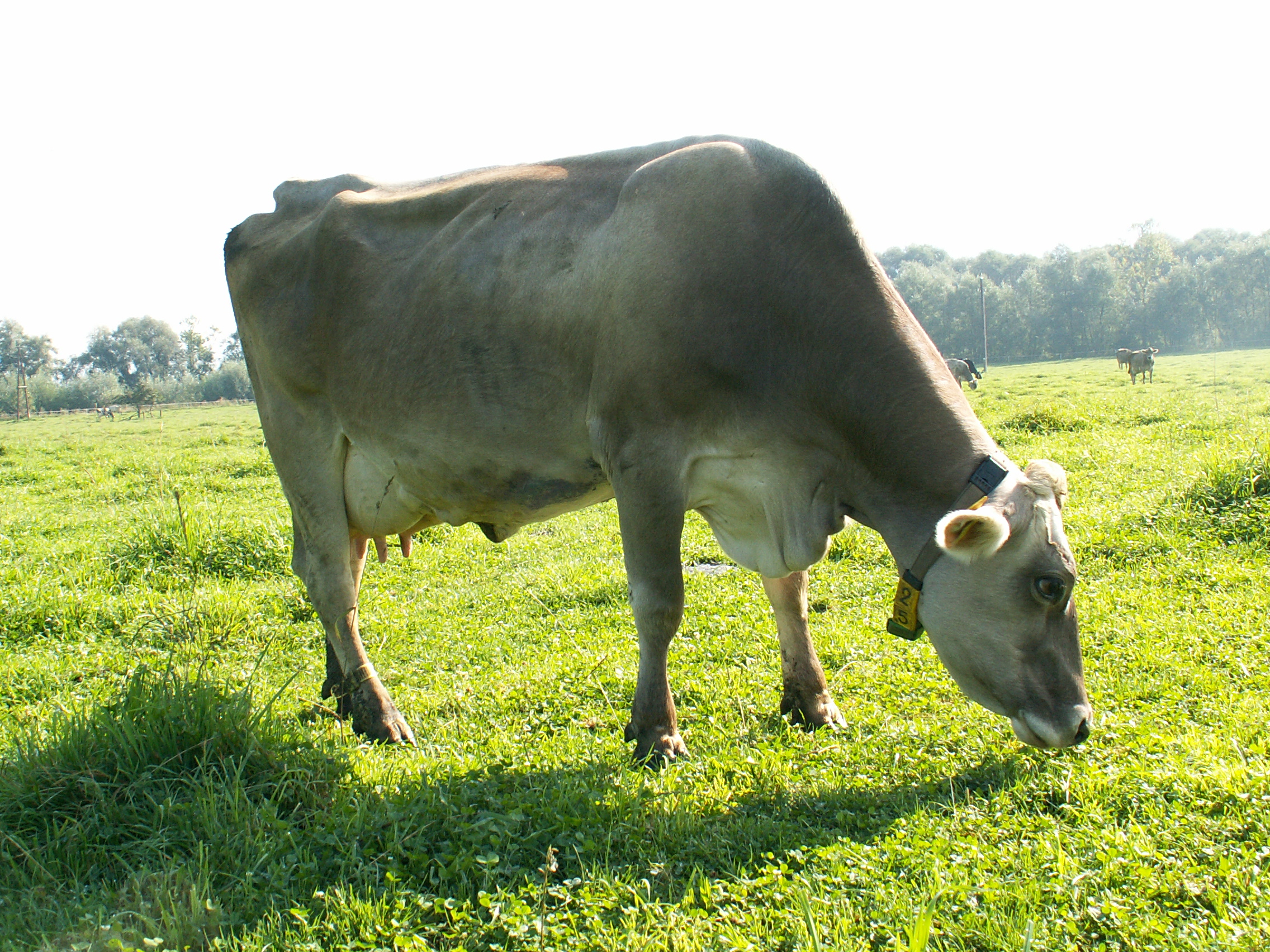Feeding is very important
The fat composition in milk is largely influenced by feeding. The fat composition in the ration (plant stock, feed components) plays a crucial role here. Furthermore, other ration parameters also affect milk fat through their effects on rumen metabolism. For example, rations rich in starch (cereals, corn silage, etc.) reduce the proportion of polyunsaturated fatty acids. But secondary feed ingredients, such as those found in some herbs, can also lead to shifts in the fatty acid content of the milk. Even if cows mobilize body reserves or receive supplementary feed containing oil, this is reflected in the milk fat. Experiments also revealed certain genetic effects as well as milk production and lactation stage influences on fat.
Same feeding area – different fat
At the Bio-Institut, full-pasture farming was compared with silage feeding for dairy cows as part of a three-year trial. During the grazing season, the fully grazed cows received only pasture feed (short grass pasture), comparable cows in the grass silage groups were fed either only grass silage (S-KF0) - from the same grassland areas - or with grass silage and, depending on performance, some concentrated feed (S-KF+). ) fed. The results of the feeding groups on milk fat composition are now available. Since only relatively little concentrated feed was used in the grass silage group with concentrated feed supplementation, a fatty acid pattern that could be classified as nutritionally favorable was evident in all three test groups. Although the same grassland areas were used for silage preparation as for grazing, there were clear differences in the milk fatty acid composition between the pasture group and the silage groups. The milk from full pasture feeding had significantly higher proportions of unsaturated and polyunsaturated fatty acids, which are considered nutritionally favorable. The content of omega-3 fatty acids and CLA fatty acids was also highest in the grazing animals. The differences can be attributed to the different vegetation stages during use, the forage selection effects during grazing or preservation effects (crumble losses, fermentation).
Table 1: Fatty acid concentrations in the experimental groups

Nutritional value
In the trials at the HBLFA Raumberg-Gumpenstein, special attention has been paid to fat quality for years. For example, nutrition experts recommend a daily intake of around 1 g of omega-3 fatty acids and 1 g of conjugated linoleic acids (CLA) for women. In Table 2, the theoretical daily “milk requirement in liters” was calculated to cover half the daily requirement for omega-3 fatty acids and CLA fatty acids. This shows that the origin of milk can make significant differences in terms of its contribution to covering daily requirements. With full-grain milk, 0.7 to 1.0 liters of milk (or milk products made from it) would be enough to cover half the daily requirement. For rations with a lower proportion of grassland feed (corn silage, concentrated feed), the corresponding milk requirement would be 2 to 3 times higher.
Table 2: Milk requirement in liters (with 3.5% fat) to cover half the daily requirement for CLA or Omega 3 fatty acids (example: women with a daily requirement of 1 g each)
|
|
Results Velik and Mit. 2013 |
Attempt |
|||||
|
|
different milk origins |
Grass silage |
pasture |
||||
|
Sample origin or ration type |
Alpine milk1 |
Ø Super marketm.2 |
MS/KF/Heu3 |
S- KF0 |
S-KF+ |
VW |
|
|
conjugated linoleic acids (CLA) |
1,3 |
2,0 |
3,6 |
1,4 |
1,5 |
0,7 |
|
|
Omega-3 fatty acids (ω-3) |
1,3 |
1,6 |
3,6 |
1,2 |
1,2 |
1,0 |
|
1 Fatty acid content of alpine milk during the alpine pasture period (June-September, the respective values were averaged for the diameter of the 13 alpine pastures, Velik et al., 2013)
2 Average of Austrian drinking milk brands from the supermarket (March to November, Velik et al., 2013)
3 Fatty acid content for a corn silage concentrate feed hay ration from Velik et al. (2013)
“Green milk” scores
The present results show that milk and dairy products can make a significant contribution to meeting human needs with valuable fatty acids. It can be expected that in the future, increased attention will be paid to fat quality in milk quality programs. From a nutritional perspective, milk and milk products from pasture and grassland-based feeding systems perform very well in this regard. Experimental results also show that increasing starch-rich concentrate feed and corn silage doses reduce the proportion of desired polyunsaturated fatty acids and that supplementary feeding of oil-containing feedstuffs can increase this. The vegetation period, the grassland plant population, forage selection in pasture, the type of preservation, body fat mobilization as well as genetics and the lactation stage also have an influence.
Scientific publication and authors:
Scherzer, E.1,2, A. Steinwidder 1, W. Starz1, H. Rohrer1, R. Pfister1, M. Velik3 and W. Zollitsch2 (2020): Influence of full pasture or grass silage feeding of cows on the fatty acid pattern of milk. Breeding Science, 92, (2) pp. 106–124., ISSN 0044-5401 © Verlag Eugen Ulmer, Stuttgart.











